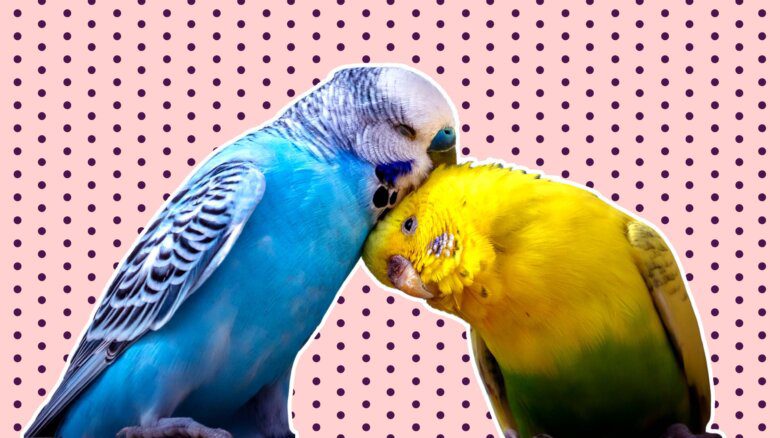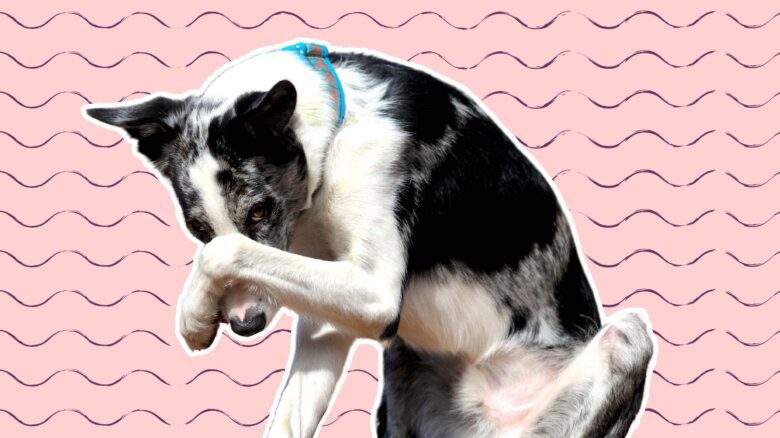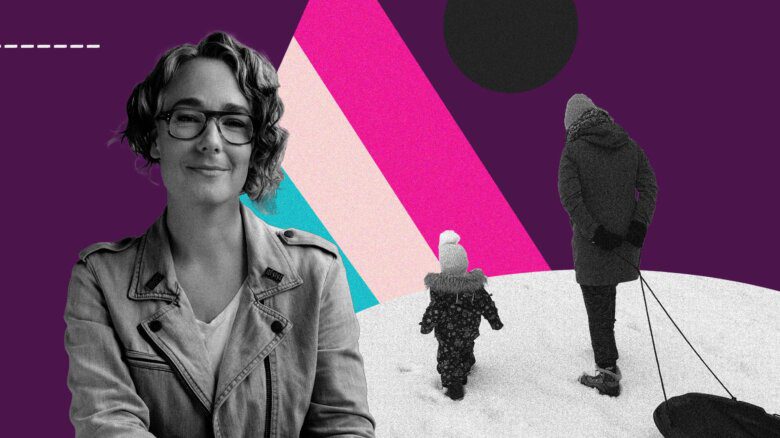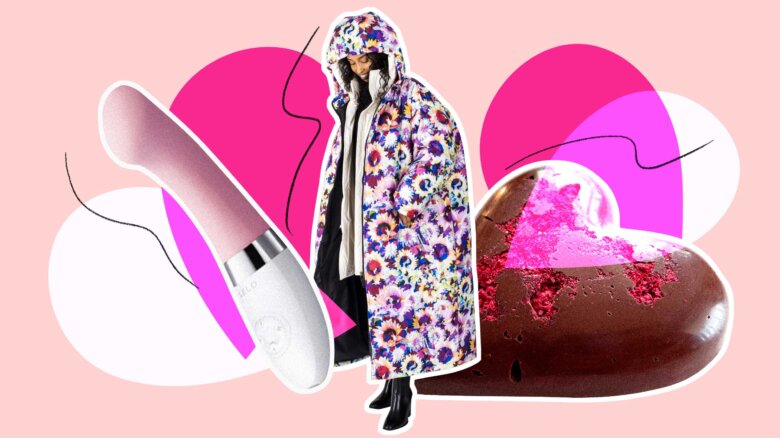In an oft-gendered world of childrearing, where does a non-binary parent belong? Such is the conundrum non-binary writer andrea bennett faced when their child, Sinclair, was born. In their new collection, Like a Boy but Not a Boy, bennett approaches gendered expectations with introspection and depth, exploring the boundless roles of working, playing and living as a non-binary person. In the essay excerpted below, “Milk and Generativeness,” bennett explores the hurdles of non-binary parenting, asking: When something as connective and life-sustaining as nursing becomes extricated from the restrictions of gender, what shape does joy take?
Sinclair was born hungry. Small and blue and hungry. A few hours after the C-section I was narcoleptic from the epidural, and as she tried to latch and drink, I couldn’t stop falling asleep. “Whoa,” Will said, or something like it, and he held the baby onto me. She was born determined, and that determination stayed with her as she grew from tiny to small to a little bit bigger. After we returned home to our one-bedroom apartment on the third floor of a triplex in Little Italy in Montreal, I got to know her a little better. I witnessed the look of concentration overtake her face as she zeroed in for milk. She latched easily. She drank quickly. She handily mastered the skill of breathing through her nose. When I worked at Tim Hortons in the early 2000s, the milk and cream came in ten-litre sacs with built-in spouts. The sacs were rectangular, made of clear plastic, slick with condensation. They were heavy, difficult enough to carry from the fridge to the front of the store that the only real way to do it was to hug the sac against your chest. The whole rest of the day after replacing the cream or milk, I’d smell waves of soured dairy emanating from my striped poly-cotton blend shirt. This smell returned a few days after Sinclair was born.
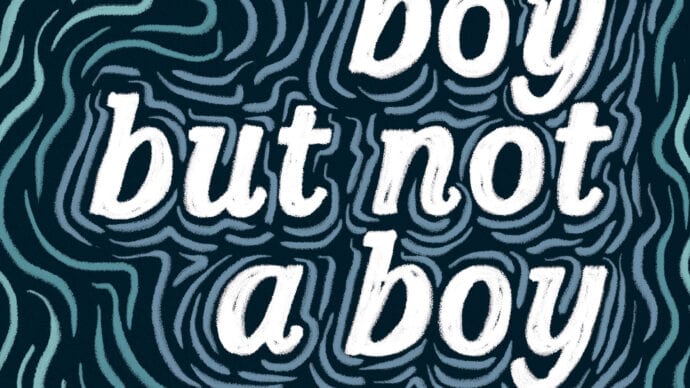
Credit: Courtesy Arsenal Pulp Press
Anne Thériault, a feminist writer, once shared an illustration on Twitter that she’d drawn of breastfeeding. The caption explained that it was what breastfeeding felt like for her; the illustration depicted delicate purple blooms at the ends of milk ducts, leading out towards the nipple, where they entered the mouth of the baby, bursting into pink and yellow-purple, orange and red and blue flowers. It is a glowing and a kind and a practical way to view a breastfeeding bond. Will’s mom said once, when Sinclair was about six months old, that she’d grown so big and large, she’d gone from newborn to a whole little human crawling across the kitchen floor, by drinking my milk alone. It wasn’t something I’d considered, not in that way. I’d felt wonder at houseplants growing on nothing more than sunlight and water but hadn’t mustered the same wonder for myself, or for Sinclair, at least not as it related to her consumption of my milk. To Thériault, to Will’s mom, breastfeeding was a generative, near-magical act. To me, it felt much more complex—something that I participated in directly, even as I felt like somewhat of an outsider.
In my early 20s, I went to a Guelph General Hospital auxiliary building for a breast reduction consultation. The plastic surgeon’s office was in a squat three- or four-storey building, and I took the stairs up to his office, which was decorated in taupes and oranges and browns. I’d had my wisdom teeth removed in an office like it (after administering laughing gas, the dentist had said, “You’ll know it’s working when the geese in the paintings on the wall start to flap their wings”), and the surgeon’s office was comfortably similar. The surgeon didn’t give me enough time to take my shirt off before he came back into the room. He knocked and entered all in one go. I covered my torso with my arms, expecting him to give me a minute, but he pressed farther into the room. He appraised my breasts: lifted them, palpated them. I could see him visualizing the transformation. Using a marker, he drew a circle around my nipple and a line down the centre of the bottom half of my breast, and then a semicircle at the base. If I went through with the surgery, these were the cuts he’d make. He’d remove my nipples and then put them back on. I might lose sensation. I might lose the ability to breastfeed. In his office after the physical exam, the surgeon posed a series of questions. “When did you know your breasts were too large?” he asked. I thought, They are too large for me. I thought of another person inhabiting my body and being fine with them. I pictured my already developing nine-year-old self and felt protective of her. He asked when I realized my breasts were bigger than everyone else’s. I began to dissociate. Part of my consciousness floated above me, observing. The self who was answering was a simulacrum. I’d gone stiff. The ever-present tension in my mid-to-upper back—a side effect of having large breasts when I’d never even wanted small ones—got louder, drowning everything else out. I left the surgeon’s office knowing I’d never let him touch me again. I put off the idea of a breast reduction in part so that I could pretend, for a while, that the consultation had never happened. I did think about having a kid, probably just one. If I stayed with my then-partner, I thought, I’d be the one gestating the kid. Maybe it was selfish to want something for myself that would exclude the possibility that I would be able to give of myself to someone else. I would never exact that pressure on someone else, anyone else, but maybe when it came to me, the idea that breast was best had permeated my consciousness to such an extent that in addition to feeling violated by the interaction, I also began to feel chastened, self-centred, vain.
In elementary school, my class put on a production of The Tale of Peter Rabbit. I wanted to be Peter. Instead, I was cast, alongside a girl named Maggie, who was good at golf, as a plump robin. “Run, Peter, Run!” we sang. “Run, Peter, Run!” I’d wanted to be the small, swift, mischievous rabbit. The music teacher praised our high notes. One morning, on my way into Vancouver from Surrey, after Will and Sinclair and I moved back out to the West Coast and in with Will’s mom for a spell, it was grey and rainy as I was walking to the bus. Grey and rainy, just like the morning before it. I was tired and had switched from feeding Sinclair milk directly from the breast most of the time to pumping it while I was at work. I was exhausted. Walking to the bus, I saw the hare I saw often on cloudy days—eating grass on a strip next to the sidewalk, bordered by a low wooden barrier and, beyond it, blackberries and brush. The hare and the baby both seemed so vulnerable, and so perfect, reminding me of the importance of tenderness and carefulness and care. What would it look like, I thought, if I applied that tenderness and carefulness and care to myself? I had no answer and several answers at once: go back to sleep, work from home, get some exercise, go to the dentist. Get a breast reduction.
From a trans male discussion group I learned that people whose BMIs fall in the obese range are sometimes denied top surgery, and that people whose BMIs are considered overweight are sometimes required to pay more for surgery. I haven’t weighed myself in years (I turned away from the scale while pregnant), but I’d guess I would be required to lose 20, or maybe 30, pounds to drop from “overweight” to “normal.” I am unconvinced about normal. When I was ill, about 10 years ago now, and my weight dropped, I was still in the normal range when I stopped menstruating. Normal when I became so anaemic my doctor told me I’d need a blood transfusion. The BMI is “unscientific bullshit,” a friend of mine says. But I don’t want to have to wait, again, for surgery. Even before my first consultation, in my teens, my family doctor told me to try losing weight, which could bring me down a cup size, before I considered surgery. I left her office shamed but knowing that losing weight wouldn’t give me what I wanted, which was to have no breasts at all; later, when I was temporarily thin and still had large breasts, I felt vindicated. I still wanted surgery—or rather, I still wanted to not have breasts. The desire was a steady thrum under every other thing I did, every other thought I had. When I think about touring this book—when I think of standing on a stage and embodying the words in this book—I don’t want to do it with breasts. I’m not sure I can do it in this iteration of my body. I don’t know if I can get close enough to what is “normal”—when I see “normal” I think perfect, I think ideal, I think eludes me. I don’t know if I will be judged worthy for surgery.
When I worked at Adbusters I was also editing news columns for This Magazine. A trans dad, Trevor MacDonald, pitched a column talking about chestfeeding and his involvement with La Leche League. MacDonald, who’d had top surgery and chestfed with the aid of a supplemental feeding tube and donor milk to bolster his own milk, had relied in part on La Leche to help him through difficulties lactating and feeding his baby. Later, when he applied to become a group leader, to pay forward the support he’d received from others, his application was denied. “The roles of mothers and fathers are not interchangeable,” a spokesperson for La Leche League wrote in a letter to MacDonald. “Since an LLLC Leader is a mother who has breastfed a baby, a man cannot become an LLLC Leader.” In Surrey, a friend sent me an article from the Stranger about breast milk; she wrote something like, This is cool! It may or may not be a fit for your experiences. The article opens, “To produce breast milk, mothers literally melt their own body fat… we literally dissolve parts of ourselves, starting with gluteal-femoral fat, a.k.a. our butts, and turn it into liquid to feed our babies.” The author is a food writer who is interested in the science of food—in this case, breast milk. How breastfed babies get fewer colds. How the food a breastfeeding parent eats is transmitted, in part, through breast milk, giving a baby their first shot at palate development. The article is also in part a salvo for the development of paid maternity leave in the United States, a thing we have in Canada but that many Canadians—those cobbling together part-time jobs, contracting, freelancing—may not have access to. The article doesn’t acknowledge that anyone but mothers breastfeed, and reading it as a breastfeeding parent who’d fall into the category of people the salvo is meant to support—those lacking the resources to not work for a while—made me feel like I was perhaps a bit of a charity case, one that everyone I could have allied with had temporarily, or permanently, forgotten.
As I ran into my own breastfeeding difficulties—mostly, keeping my supply up while I was away from home for 11 hours a day—I looked up tools and techniques and resources for how best to keep my kid fed, and I felt, as a non-binary person, like I was standing a ways back from a circle of chairs, observing a meeting in progress. Women bleed, women carry, women feed. I bleed, I carry, I feed. I am not a woman. I read “breast milk is much more than food: It’s potent medicine and, simultaneously, a powerful medium of communication between mothers and their babies,” and performed a simultaneous translation: a powerful medium of communication between lactating parents and their babies. By acknowledging an adjacency to masculinity have I ceded my right to inclusion? Or by lactating have I ceded a right to my gender? What would it mean to celebrate the particularly feminine contribution of breastfeeding while also celebrating everyone who breastfeeds and isn’t a woman? I can imagine what Anne Thériault means when she draws the life-giving connection between herself and her child. I like, in particular, that the flowers she used to depict milk ducts were one colour, and the flowers depicting the effects of milk in the feeding baby were a burst of diverse blooms. I liked to witness the amazement Will’s mom had when she looked at Sinclair and thought of the milk that sustained her—maybe she was thinking of what it had been like to have and to feed her own kids. I like that both Thériault and Will’s mom feel what they feel, but I don’t feel it, not really. Breastfeeding feels complicated to me. A way to rehabilitate, in part, the complex relationship I have with my complex body. I have focused on the nuts and bolts of milk production and child growth, isolating the practice for its practical elements, without being able to make space for the emotive part, the connective part, the part that acknowledges the way I love and care for Sinclair. I am thinking about the generative act of nursing, the generative act of my nursing, the time I put in, my closeness with Sinclair. I am also thinking of the generative act of Will feeding Sinclair with the bottle of milk that I pumped. As Will feeds Sinclair, he, too, is communicating with her. She lies in the crook of his arm and he tilts the bottle back for her and the room goes quiet except for the sound of her drinking. It is a moment that requires Will to gauge how hungry she is, how hungry she will be. He has honed the art of warming the milk to the temperature she prefers; she is impatient as he gets the bottle ready but won’t take it if the milk is too cold. When she’s done, she sits up, and Will responds by setting the bottle aside. As she grows older, Sinclair opts to do many things for herself. But even as she can hold her own bottle, she chooses not to. She prefers to have Will, or me, hold it for her. I am thinking about ways to talk about milk and parenthood that hold a place for women (trans and cis), non-binary parents, and trans dads. For people who can’t, or don’t want to, nurse.
I am buoyed, researching this essay eight years after I edited his column, to learn that Trevor Macdonald did eventually join La Leche League as a leader, that in fact he helped develop the league’s messaging and outreach to trans and non-binary parents, which includes notes that gender dysphoria may preclude breast- or chestfeeding, that it’s okay to prioritize one’s mental health, that some parents with dysphoria choose to pump and bottle-feed, and others use donor milk—essentially, that there is no one way to do things correctly. I am able to talk about everything I talk about in this essay, and more broadly in this book, because of the work of my trans forebears, some of whom are my age, or not much older. I am not sure if I would have made the same decision, or a different one, if I’d first sought surgery in a more welcoming, less oppressive environment. I am not sure if surgery will fix the way I feel about my body—the physical pain, the social discomfort, the semi-estrangement from my own breasts. But I don’t think that gender-affirming surgeries need to be a panacea for trans people in order for trans people to have access to them. And even if it doesn’t solve everything, I still want surgery. I do think that I will feel relieved, like the pressure on my jaw that let up after having my wisdom teeth out, once I am breast-free. But I’ve had enough other unrelated surgeries to know that there is often a longer period of healing than you might expect, and that perfection doesn’t exist. I may have the surgery and initially feel disappointed; I will have waited for that moment for more than two decades, and it is hard for something you’ve imagined so many times to live up to your expectations. But it’s also possible that I’ll remove my bandages, put on a T-shirt, and feel for the first time, without the use of a constrictive binder, a sense of gender euphoria. The sense that I have, for once, prioritized providing myself with tenderness and care. I am not sure what bounty surgery will bring me. I am sure that it won’t result directly in being misgendered less; only social change, the same type that would remind journalists and public health officials and doctors to include some language about chestfeeding, about trans and non-binary gestational parents, will do that. What I can predict—it took writing this essay for me to figure it out—is that I will be able to feel grateful that I nursed Sinclair only after I’ve had surgery. That I’ll be able to look back and feel grateful to myself, to fully recognize what it meant, only after I am allowed to fully recognize myself.
“Milk and Generativeness” from the forthcoming essay collection Like a Boy but Not a Boy by andrea bennett (published by Arsenal Pulp Press, 2020). Excerpted with permission from the publisher. Like a Boy but Not a Boy is now available for purchase.
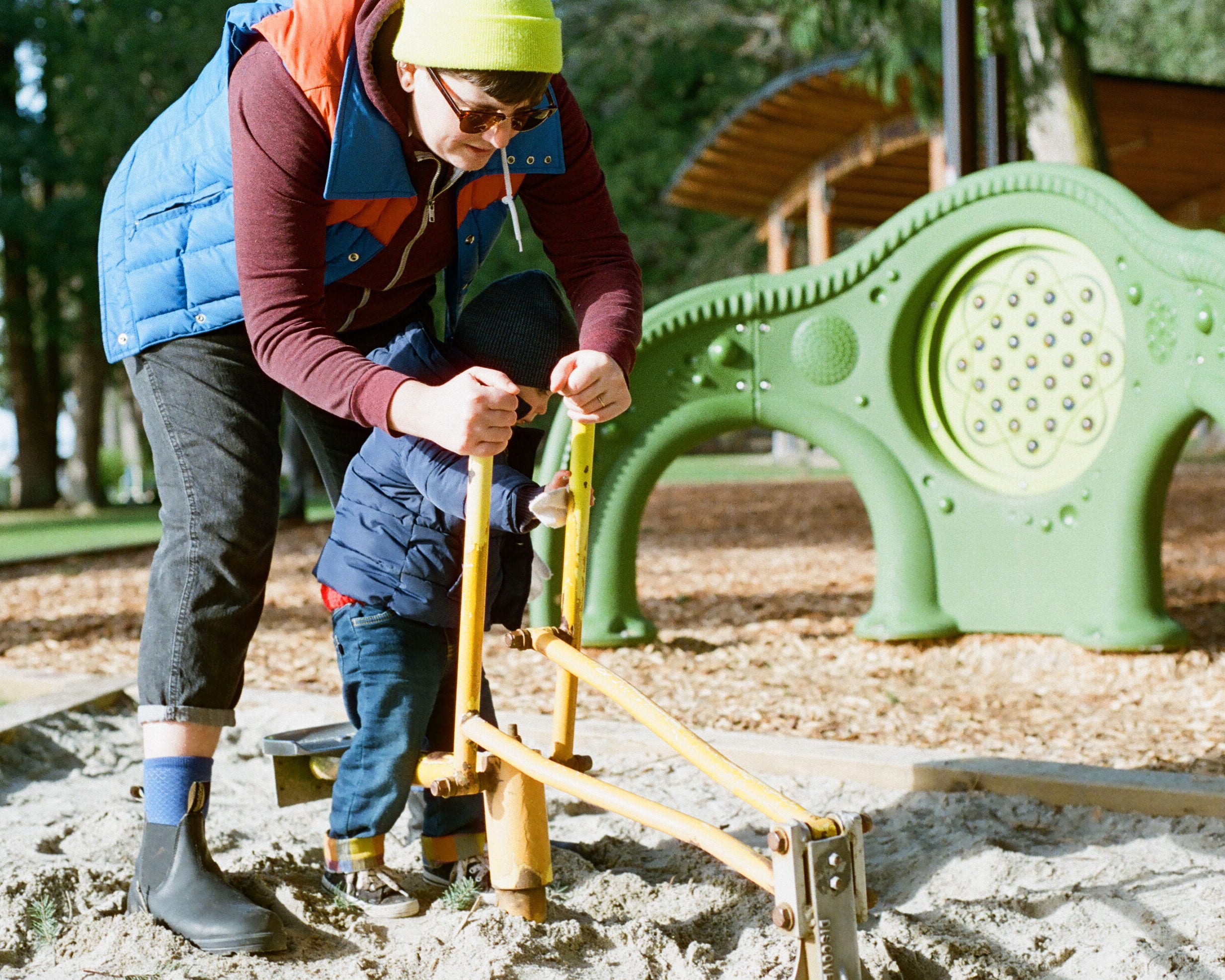
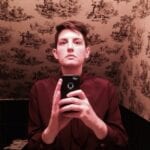
 Why you can trust Xtra
Why you can trust Xtra